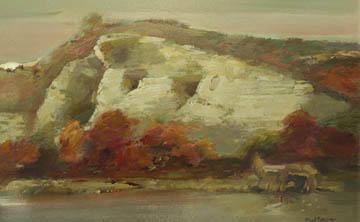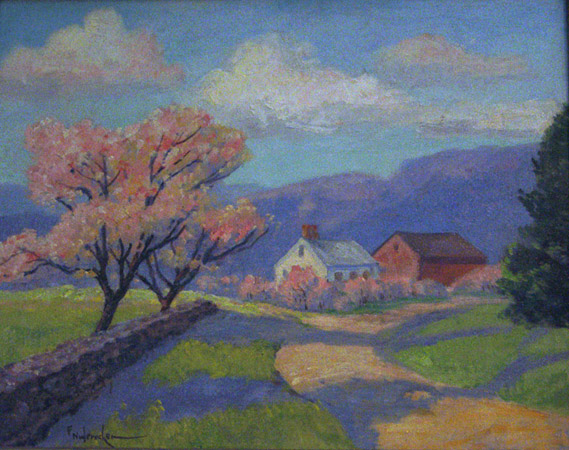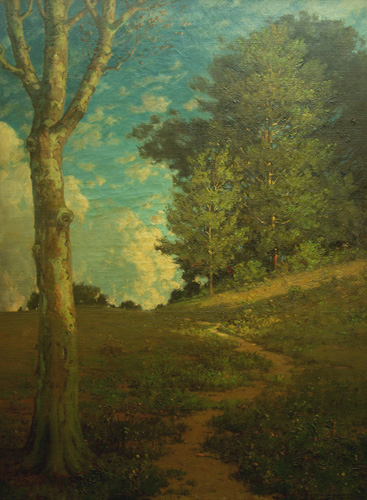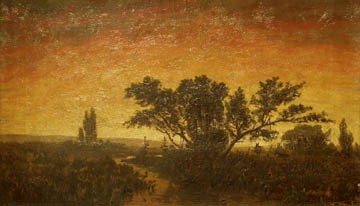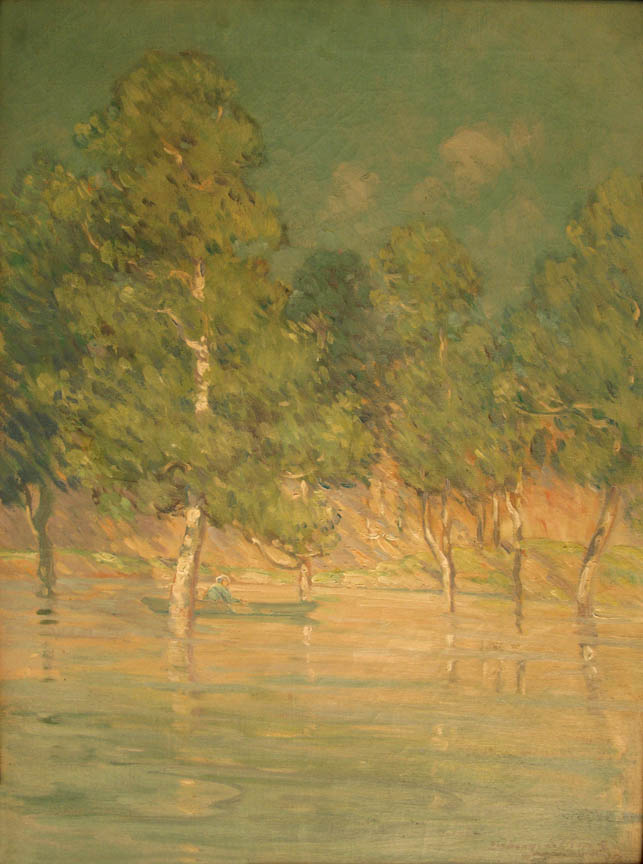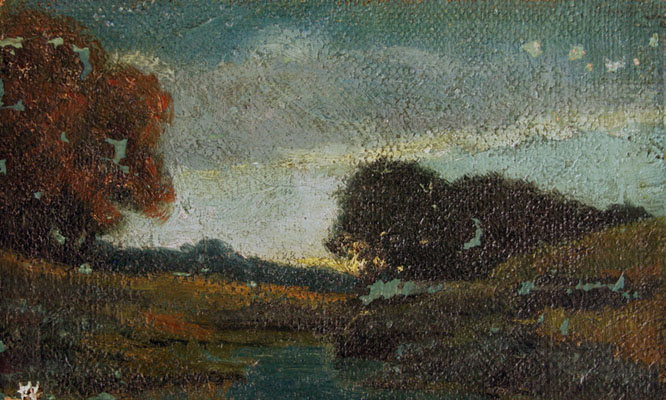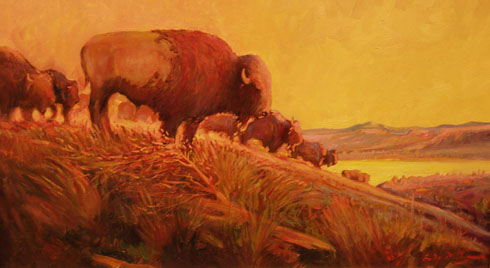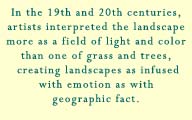
Paintings created by the nation’s early artist/explorers had focused on documenting the frontier – even if they also at times glorified it. As more artists traveled and studied abroad they brought current European modes of painting to the United States, and these contemporary styles greatly influenced the interpretation of the American landscape. A significant shift occurred away from the objective, documentary and often monumental approach of previous landscapes to presenting a more intimate, emotive and subjective interpretation.
Artists accomplished these new aesthetic goals through technical as well as stylistic means. Under the influence of the Barbizon School, American artists began painting directly from nature – creating finished works on site rather than in the studio. While for some artists this method led to greater realism in the works, it also encouraged a greater appreciation of the beauty in everyday life and the familiar landscape. Later in the century, American artists experienced the looser, less meticulous brushstroke and vibrant, more expressive use of color typical of Impressionism. In these works, the quality of light and its effect on the color of objects became as important as the objects themselves.
